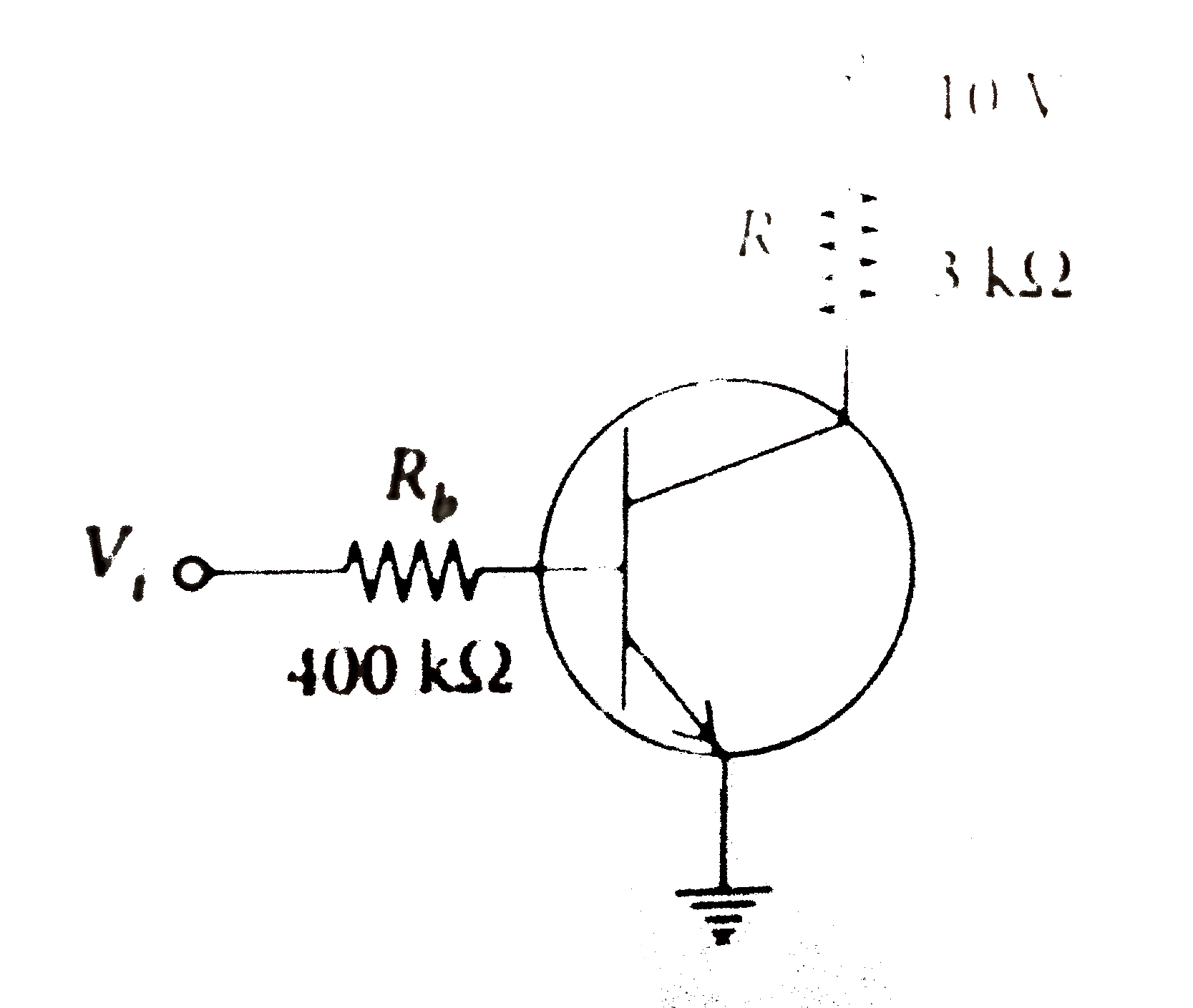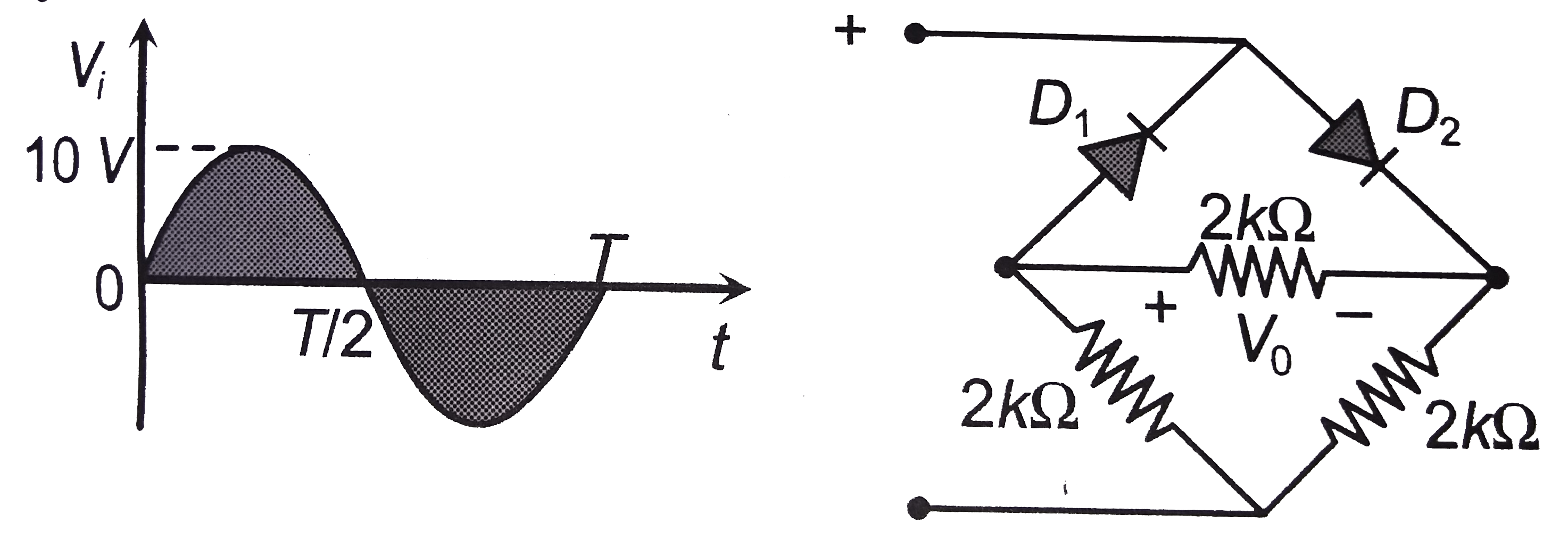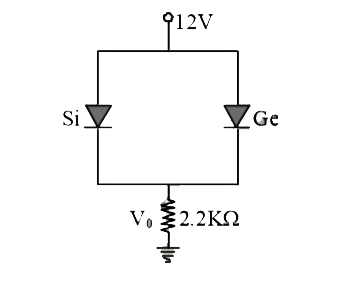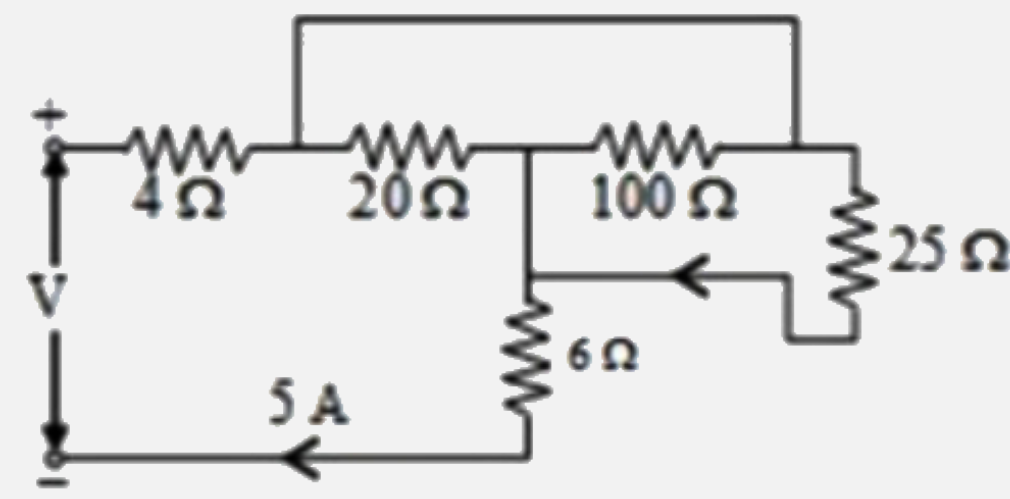In the circuit shown in figure, when the input voltage of the base resistance is 10 V, is zero and is also zero. Then

both (A) and (C )
The correct Answer is:D
Given =10 V,
As

Topper's Solved these Questions
- SEMICONDUCTOR ELECTRONICS : MATERIALS , DEVICES AND SIMPLE CIRCUITS BOOK - NCERT FINGERTIPSCHAPTER - SEMICONDUCTOR ELECTRONICS : MATERIALS , DEVICES AND SIMPLE CIRCUITS EXERCISE - NCERT Exemplar
8 Videos
- SEMICONDUCTOR ELECTRONICS : MATERIALS , DEVICES AND SIMPLE CIRCUITS BOOK - NCERT FINGERTIPSCHAPTER - SEMICONDUCTOR ELECTRONICS : MATERIALS , DEVICES AND SIMPLE CIRCUITS EXERCISE - Assertion And Reason
15 Videos
- SEMICONDUCTOR ELECTRONICS : MATERIALS , DEVICES AND SIMPLE CIRCUITS BOOK - NCERT FINGERTIPSCHAPTER - SEMICONDUCTOR ELECTRONICS : MATERIALS , DEVICES AND SIMPLE CIRCUITS EXERCISE - Digital Electronics And Logic Gates
16 Videos
- RAY OPTICS AND OPTICAL INSTRUMENTSBOOK - NCERT FINGERTIPSCHAPTER - RAY OPTICS AND OPTICAL INSTRUMENTSEXERCISE - Assertion And Reason
15 Videos
- WAVE OPTICSBOOK - NCERT FINGERTIPSCHAPTER - WAVE OPTICSEXERCISE - Assertion And Reason
15 Videos
Similar Questions
In the circuit shown in Fig. when the input voltage of the base resistance is 10V,Vbe is zero and Vce is also zero. Find the values of I,I and β.

View SolutionIn the circuit shown in Fig.
if we assume that when the input voltage at the base resistance is 5V,VBE is zero and VCE is also zero. What is I,I and beta?
When the input is zero, then I is zero. What would be the output wave form if the input wave form is as shown in Fig.
View Solution
Knowledge Check
In the circuit shown in figure , V must be
 A50VB80VC100VD1290V
A50VB80VC100VD1290VIn the circuit shown in figure the maximum output voltage V0 is
 A0VB5VC10VD5√2V
A0VB5VC10VD5√2VIn the circuit shown in figure, Voltage V0 is
 A11.7 voltB11.3 voltC0DNone
A11.7 voltB11.3 voltC0DNone
In the circuit shown in figure when the input voltage of the base resistance is 10 V . Find the values of Ib,Icandβ .

View SolutionIn the circuit shown in figure, Voltage V0 is–

View SolutionIn the circuit shown in the figure , V must be

View SolutionIn the circuit shown in the figure , V must be -

View SolutionIn the accompanying circuit Fig. 5.10, if it is assumed that when that input voltage at the base resistance is 5 V, VBE is zero and VCE is also zero, what are IB,ICandβ ? When the input is zero, IB is zero. What will be the output waveform if the input waveform is as shown in the figure ? What is the practial use of this current ?

View Solution
